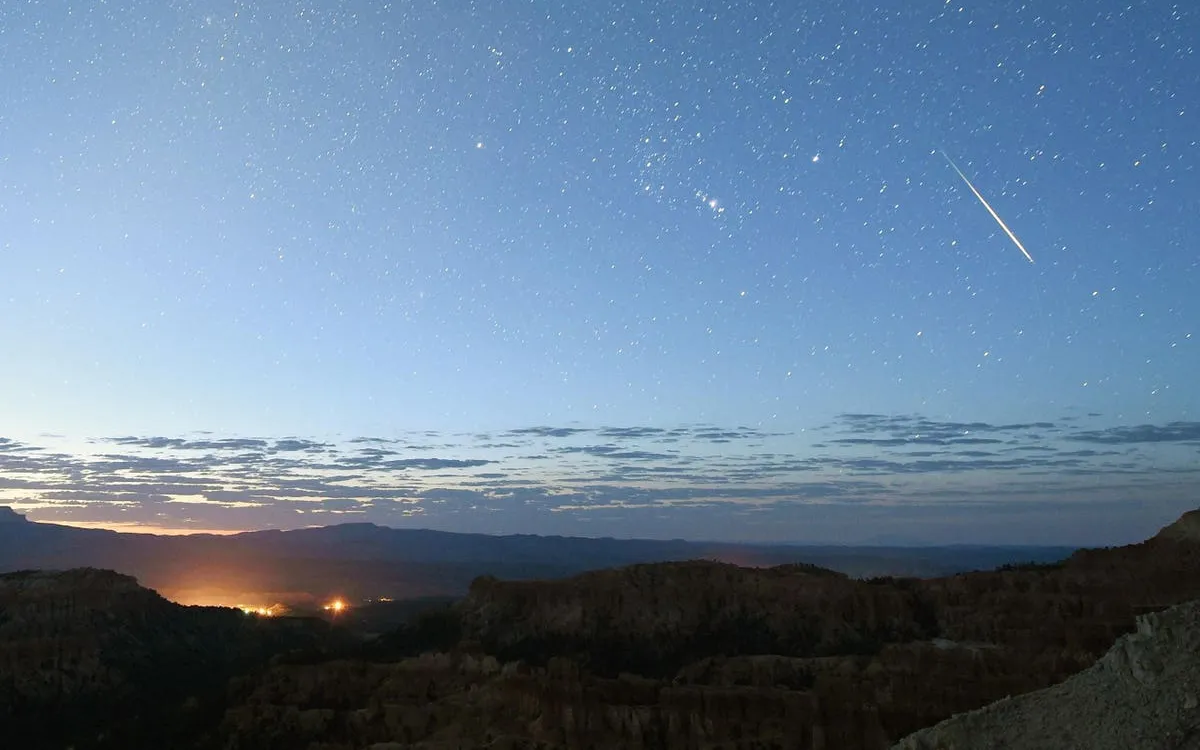
This week marks the beginning of Topline Summer’s “shooting stars” season, with the peak visibility of three significant meteor showers. Among these, the most renowned is undoubtedly the Perseid meteor shower, which will peak on the nights of August 12-13. However, a full moon looming over the sky during this time might affect visibility, making this week an optimal moment to catch a glimpse of its dazzling shooting stars.
The Perseid meteor shower is currently active, having commenced on July 17 and expected to continue until August 23. On its peak night, stargazers can anticipate witnessing 50-75 meteors per hour. However, it’s important to note that in 2025, this number may significantly decline, limiting visibility to only the brightest of the shooting stars. This reduction in visibility is primarily due to the full sturgeon moon rising on August 9, which will dominate the night sky during the peak of the Perseids, remaining visible throughout the night.
If you’re eager to catch the stunning shooting stars from the Perseid meteor shower, there are two prime windows for observation in 2025. The first opportunity is available now, prior to the moon reaching its first quarter phase on August 1. The second window occurs on August 15, when the moon will rise around midnight, with subsequent nights offering similar late-night viewing times.
According to NASA, the best strategy for watching a meteor shower is to venture away from urban areas to the darkest location possible, such as a Dark Sky Place. Before heading out, it’s advisable to check the weather forecast since a clear sky is essential for optimal viewing. Choose a spot with an unobstructed view of the night sky, and remember to dress warmly, bring bug spray, and pack snacks and drinks. Patience is crucial; take breaks every 30 minutes and avoid looking at your smartphone, as its bright light can impair your night vision.
After the Perseid meteor shower wraps up on August 23, the next notable meteor shower will be the Orionids. This shower will be active from October 2 to November 12, peaking overnight on October 22-23, just one day after October's new moon. This timing promises perfectly dark skies, allowing many of the Orionids' expected 10-20 shooting stars per hour to be visible to observers situated away from light pollution. The Orionid meteor shower is particularly unique as it is one of two annual meteor showers associated with Halley's Comet, the most famous and one of the largest comets known. The other is the Eta Aquariids, which will next peak on May 5-6, 2026.
For those intrigued by celestial events, the upcoming Perseid meteor shower and the following Orionid shower provide perfect opportunities to experience the wonder of the night sky. Prepare adequately, find a dark spot, and enjoy the show of nature’s spectacular shooting stars!